Juno's Best Images of Jupiter and Its Moons (So Far)
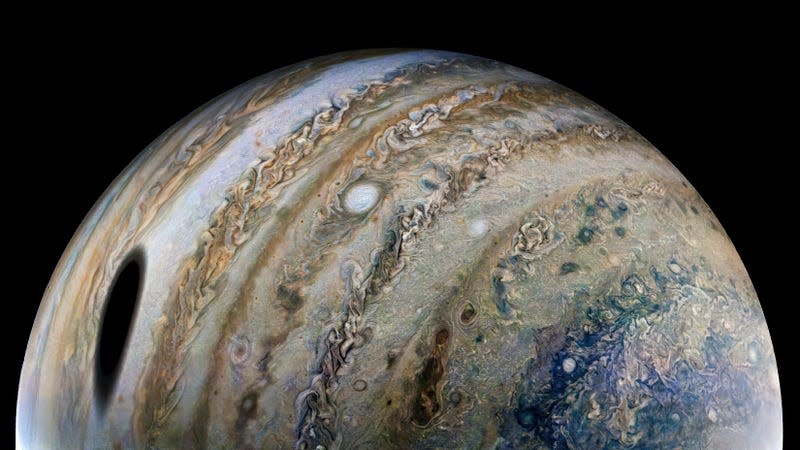
Jupiter and its moons are a diverse and dynamic subdivision of our solar system’s neighborhood, one that NASA’s Juno spacecraft has been visiting since 2016. Besides hosting the system’s largest planet, at over 300 times the mass of our own planet, the Jovian system includes 95 known moons, the largest of which are intriguing venues for understanding the evolution of our solar system and the possibility of extraterrestrial life.
Two of the moons—Io and Europa—are polar opposites. One is covered in volcanoes and lava lakes while the other is an icy body which probably contains a huge subsurface ocean. With as much time flying around the Jovian system as a two-term president, Juno continues to pull back the curtain on the mysteries that remain on the gassy, gritty bodies about 484 million miles from Earth. Here are some of the best images Juno has captured of Jupiter and its most prominent moons.
Jupiter from afar
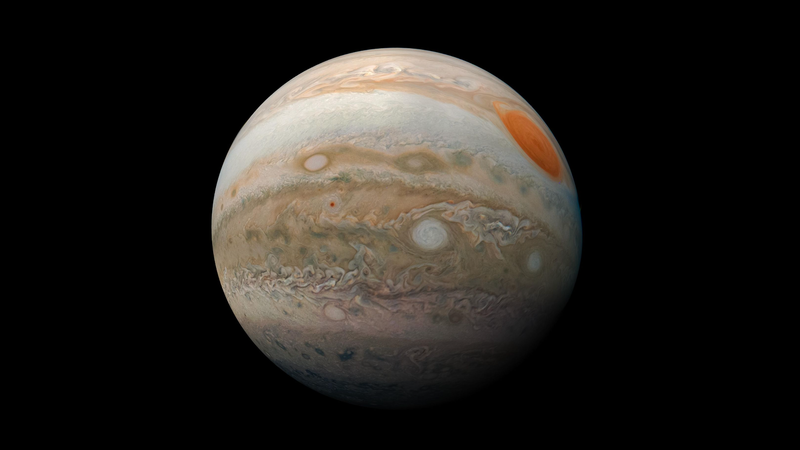
Jupiter is a stunner; we’ve known this for years. But Juno offers sharper, closer-up images of our local gas giant than other telescopes, in space or on the ground (though the Webb Space Telescope has captured its fair share of Jupiter’s beauty.)
The cold (but hellish) Io
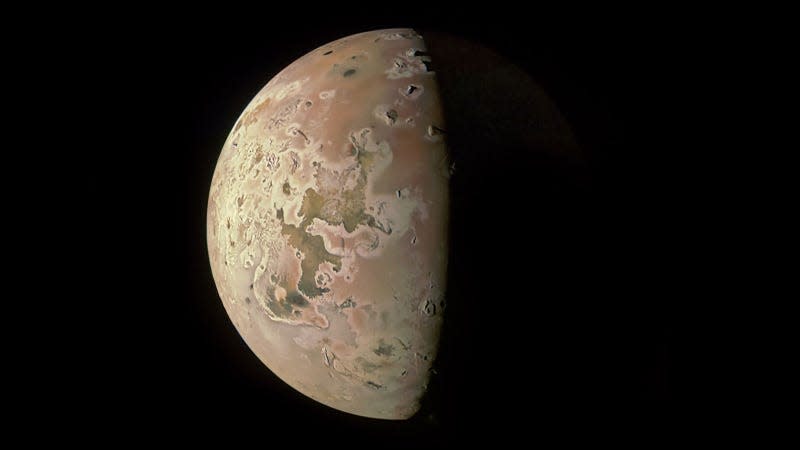
Io’s north polar region was observed by JunoCam in October 2023, revealing mountains (towards the top of the image, on the border of the terminator—the line between day and night on the moon). The image was taken when Juno was about 7,270 miles (11,700 kilometers) above Io. Even though Io is covered in volcanoes, its temperature away from those hotspots is well below freezing, according to NASA.
Io and Jupiter
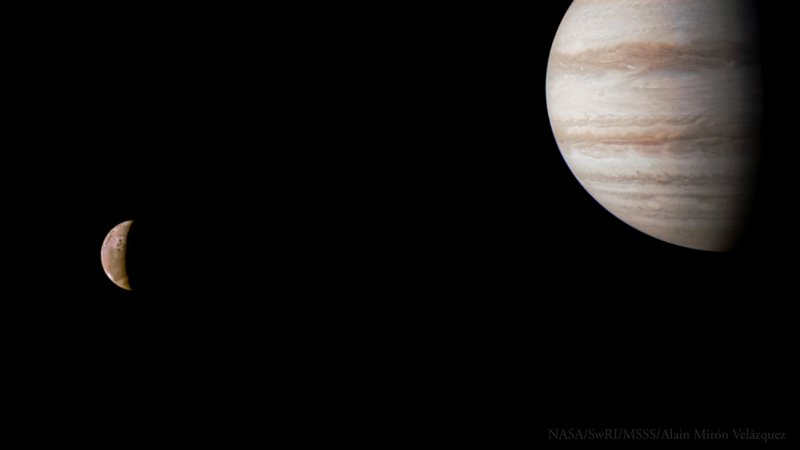
From afar, you can’t tell that Io (at left) is covered in hundreds of volcanoes. But you also can’t tell that Jupiter’s opalescent streaks are actually turbulent clouds of gas. It makes the Jovian system seem almost...peaceful? Still, I wouldn’t recommend making a vacation out of it.
Why the long face?
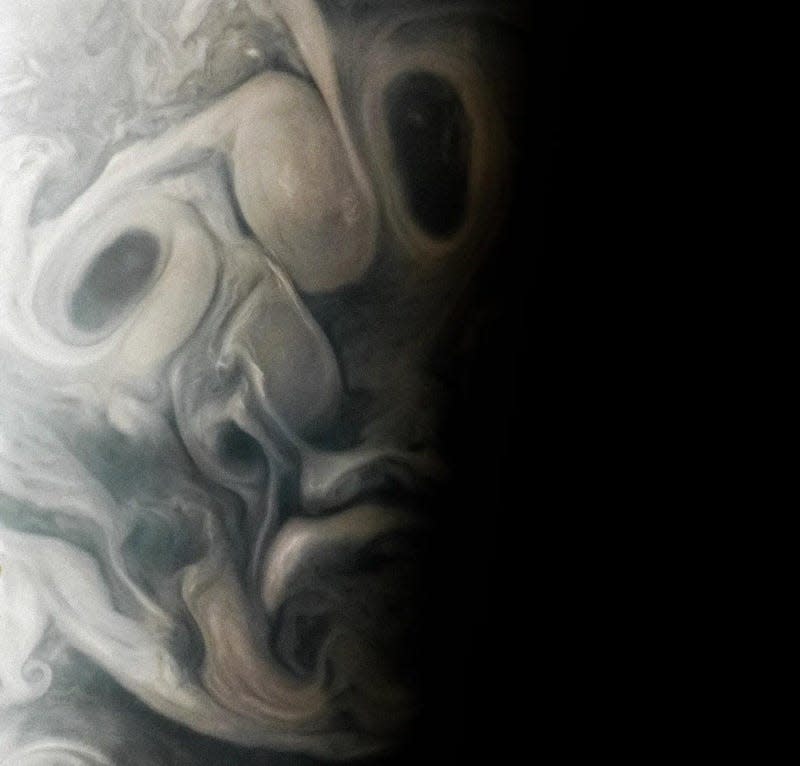
In September 2023, Juno spotted a collection of clouds on Jupiter that looked despondent. (As one commenter pointed out at the time, it may be upset because it has gas.) It’s a fun example of pareidolia, a phenomenon which causes us to see faces and figures in otherwise random or unrelated objects.
Jets from Io!
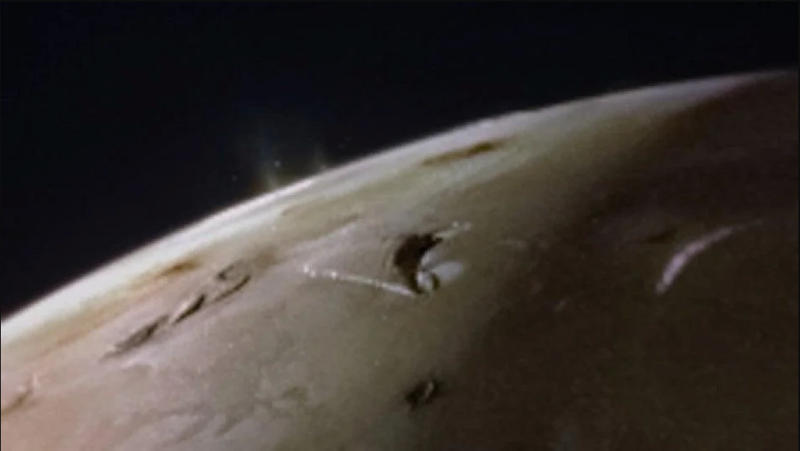
In February, June spotted apparent volcanic plumes rising from Io’s surface. According to the Southwest Research Institute—and as reported by Gizmodo at the time—the plumes were likely produced by two vents in a single, giant volcano, or two volcanoes close to one another.
A moon’s landscape up close
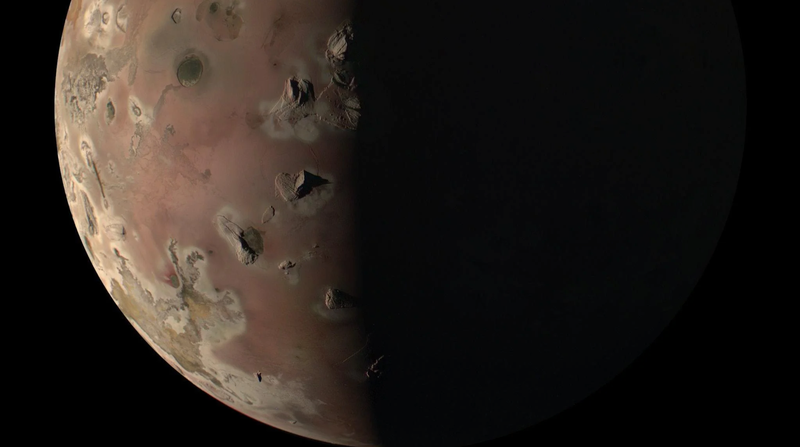
In December 2023, Juno had a close encounter with Io, coming within 930 miles of the volcanic moon’s surface. It was the closest flyby of the moon by any spacecraft in the last 20 years, according to NASA. Io is the most volcanically active body in our solar system, and its surface is peppered with volcanoes and (as a later slide will show) lakes of molten rock.
Four views of Europa
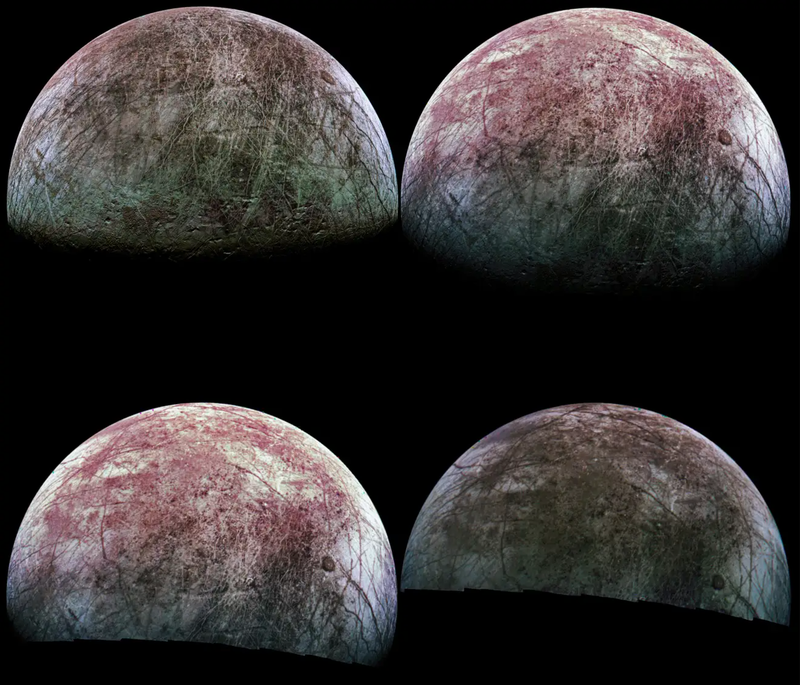
Juno’s first flyby of Europa happened in September 2022. The spacecraft got good looks at the icy moon’s rugged terrain and possible impact craters on its surface. Europa is slightly smaller than Earth’s Moon, but has a fun twist: it probably contains a salty ocean beneath its miles-thick surface.
Three views of Jovian storms
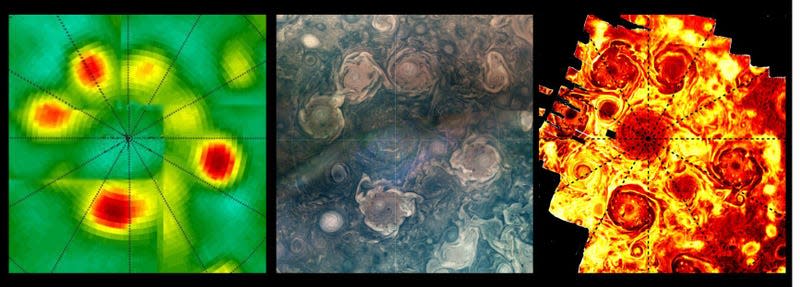
These three images show the cyclones swirling around Jupiter’s north pole in microwave, visible, and ultraviolet light, respectively. All captured by Juno, the different wavelengths reveal different aspects of the storms. According to a NASA JPL release, the microwave image reveals that the storms are at least 62 miles (100 kilometers) deep, while the infrared image shows the heat radiating from Jupiter’s upper atmosphere.
Europa, whose secrets lie within
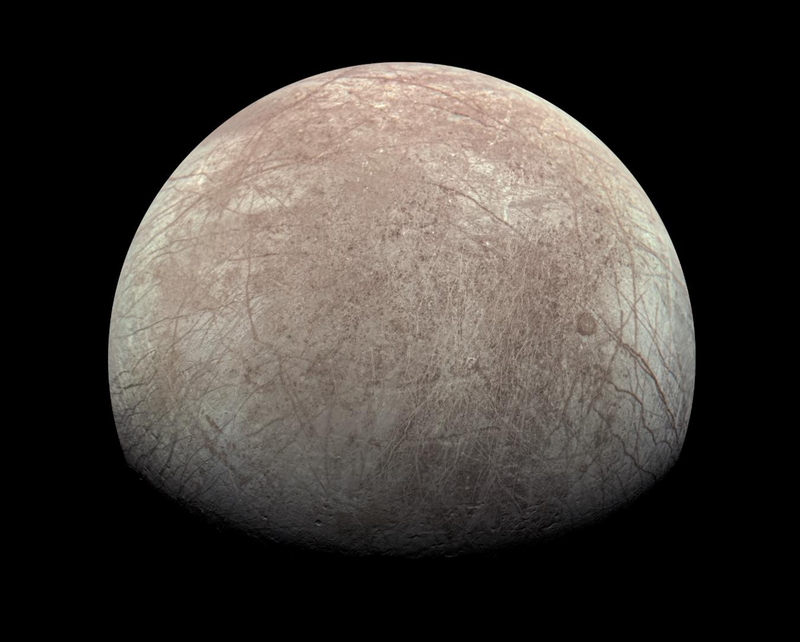
This JunoCam image of Jupiter’s moon Europa shows off the satellite’s icy shell, covered in linear fractures and ridges. Scientists believe that, beneath Europa’s ice, there is a subsurface ocean, which is a promising venue for astrobiology: the search for life beyond Earth.
In March 2024, a team of scientists determined that Europa produces about 1,000 tons of oxygen per day—enough for one million humans! Of course, there are no immediate plans to ship a city’s worth of people over to the Jovian system, but it sets the stage for some interesting research to be done by ESA’s JUICE mission, which will scrutinize the gas giant and several of its icy moons.
A lava lake on Io
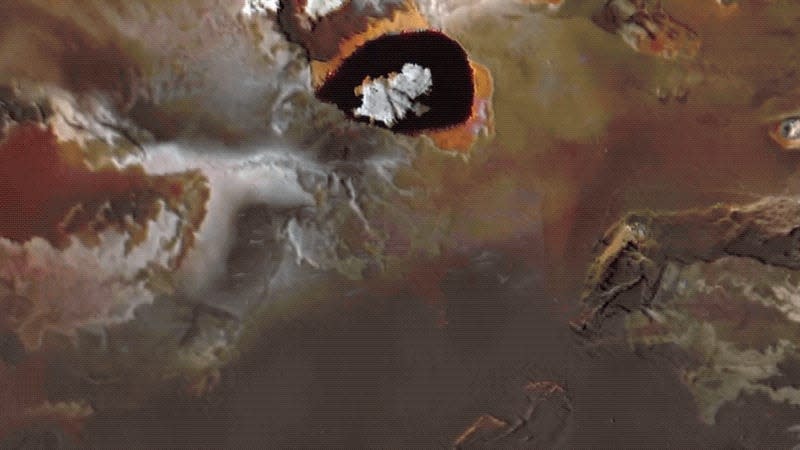
Okay, it’s not an image, but you’ll have to humor me here. This artist’s concept is derived from JunoCam raw images that revealed a lava lake on Io, complete with several islands in its center. NASA announced the discovery in April 2024. The artist’s animation breathes life into Juno data, which is showing how lively the moon is. Indeed, it’s a reminder that the still images of seemingly inert bodies in our solar system and beyond are hardly the full picture: At least on Io, there’s fiery fury.

